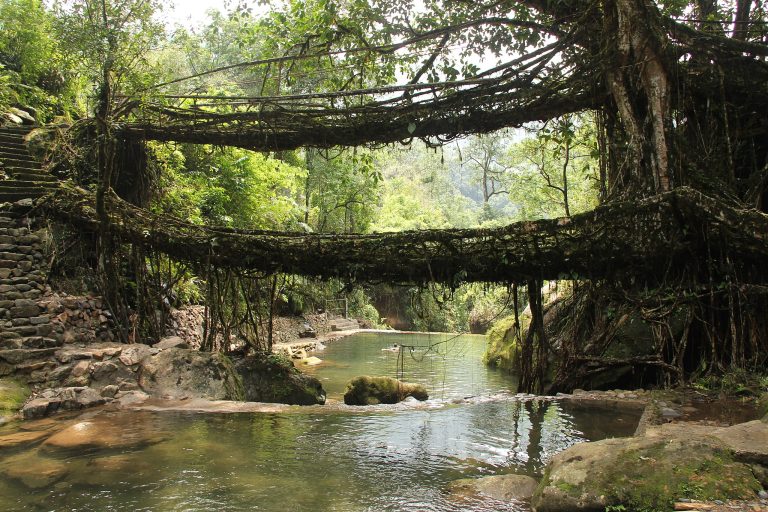Deep in the Indian forests in the northeastern state of Meghalaya, giant fig trees extend their sturdy aerial roots to the opposite bank of the river. A close look at these living bridges reveals tightly knotted and interwoven man-made patterns that shape the roots into natural overpasses.
These centuries-old living bridges are carefully constructed by numerous generations of the indigenous Khasi and Jaintia communities.
Indigenous ingenuity to resist monsoons
The origins of living bridges are as mystical as they are unclear. The Khasi people do not know when or how this tradition began as their indigenous ways of life have been passed down through oral stories and much of their cultural heritage is sparsely documented.
One might say they had divine inspiration for the construction of living bridges. According to Khasi mythology, their ancestors descended from Heaven using a living roots ladder called jingkieng ksiar, which connected Heaven and Earth.
Although the origins of the root bridges remains a mystery, their function is clear: helping villagers adapt to the heavy rains.
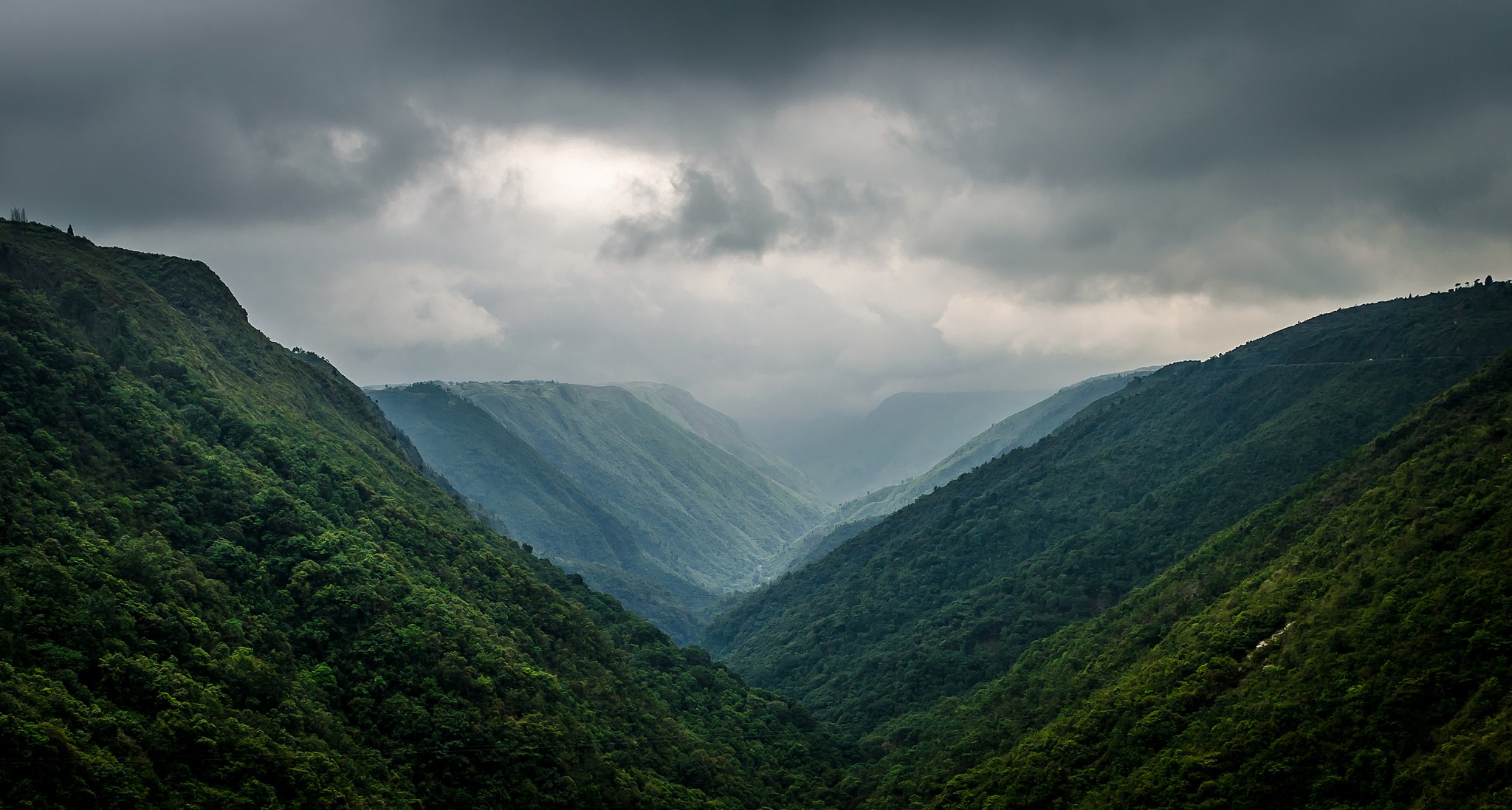
Meghalaya is known to harbor the rainiest places on Earth. Mawsynram, a town in the East Hills district, is reportedly the world’s wettest place, having received 1003.6 mm of rainfall in a span of 24 hours on June 17th of this year — its highest single day record to date. Likewise, in Sohra — a town just a few kilometers away — heavy rainfalls are equally common, putting it in second place in the ranking for wettest places.
When torrential rains would start to pour and water levels rose high, it was root bridges that allowed Khasi ancestors to cross the swelling rivers. Should the water reach even higher levels, the villagers would build another bridge just above the previous one, creating beautiful multi-level structures.
What does it take to build living bridges?
Success
You are now signed up for our newsletter
Success
Check your email to complete sign up
With some bridges dating back 600 years, a single bridge can take decades to build. It all starts with planting a sapling of Ficus elastica, a tree well suited to the job, as it can anchor itself to steep slopes and rocky surfaces.
Under favorable conditions and normal growth, within ten years the tree’s large buttressing roots will start sprouting aerial roots from above. These newly grown roots are particularly elastic and have the tendency to blend and grow together.
Using bamboo or another wooden scaffolding, Khasi builders weave aerial roots and wheedle them across the river until they reach the opposite bank. As time passes, these roots thicken and develop secondary shoots that are integrated into the structure through a process called anastomosis, i.e., the merging and intertwining of roots or branches from the same or different trees.
The construction and maintenance of the bridge is a continuous process that requires the effort of families or even entire villages through subsequent generations. Each time a new root sprouts, Khasi people find a way to incorporate it into the structure.
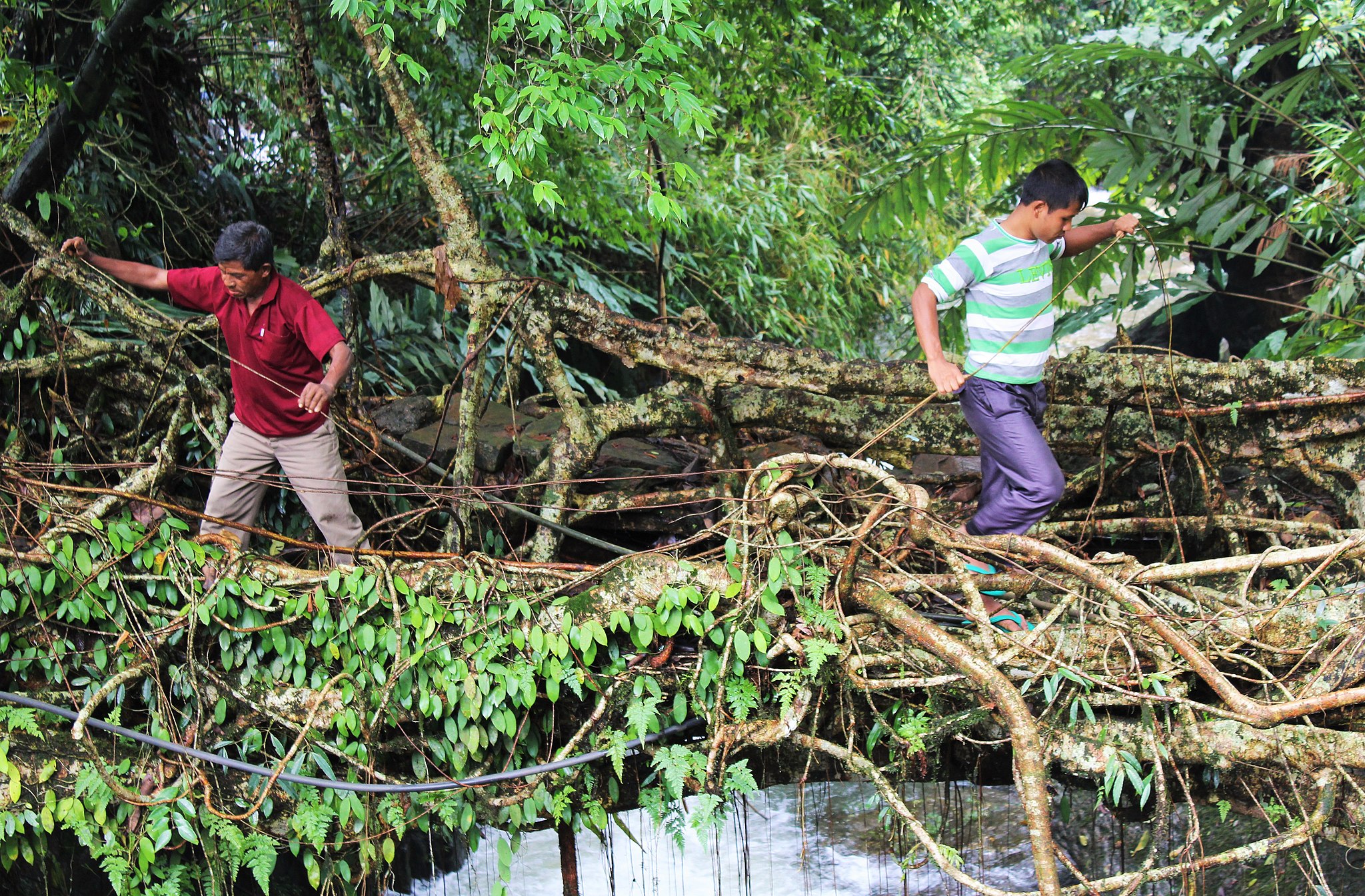
Since every root is different in length and thickness, and every Khasi builder has his or her own weaving technique, each living root bridge is unique and irreplicable. In fact, the process of building a living bridge is one of constantly interacting with tree growth and adapting to the conditions.
With bridges made from living organisms, their useful lifespan is directly related to the health of the tree from which they are built. As long as the host tree is thriving, its roots will naturally self-repair and become more robust as they age.
Living bridges vs. modern bridges
Urban bridges have been key to the development of cities and transportation systems. In fact, they have shortened distances by facilitating our circulation through areas that would otherwise be difficult or impossible to cross. But how do these bridges compare to their living counterparts?
To start, root bridges produce their own building material, making them an inexpensive alternative. Given that they self-repair and grow thicker over time — when they are actively cared for — they make for a durable structure, capable of withstanding heavy rains that would cause steel bridges to rust or concrete bridges to deteriorate.
However, it should be noted that conventional bridges can bear more weight and take much less time to build. A root bridge is usually able to hold around fifty people at a time without overburdening the tree; and, as mentioned above, it takes decades before a newly formed bridge is ready to be used.
Yet, as basketball coach John Wooden once said “Good things take time.” Building living bridges may be a worthwhile long-term undertaking.
Apart from being affordable, living bridges have a positive impact on their surroundings. Trees absorb carbon dioxide, reducing atmospheric levels of this greenhouse gas. In addition, their roots can anchor different soil levels, helping stabilize the soil to prevent landslides and erosion — unlike conventional bridges which tend to disrupt soil layers.
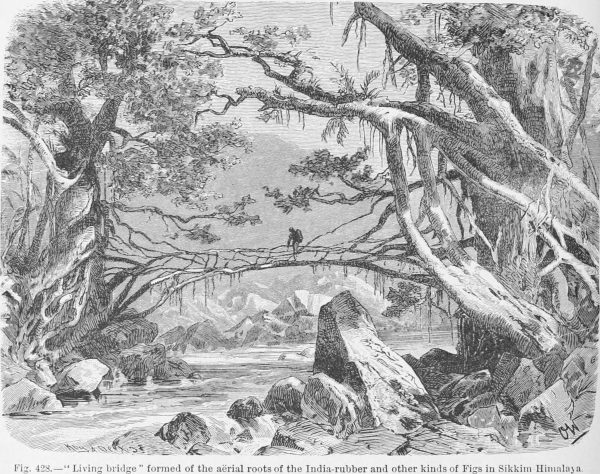
Moreover, fig trees — Ficus Elastica — play a key role in promoting biodiversity. Regarded by former fig biologist Rhett Harrison as “one of the most important plant families in tropical rainforests,” the fig tree is considered a keystone species. It is a prolific food source on which a considerable variety of frugivores depend for their survival.
In addition, the trunk of the fig tree favors the growth of moss, while its branches provide squirrels with a home and birds with a safe place to build their nests. Insects, which are essential for pollination, also benefit from the growth of fig trees.
The potential of root bridges in urban settings
Unlikely as it may seem, various architects are turning to living bridges as a way to promote sustainable development in cities. These structures would not only spare the environment the damage inflicted by conventional bridges, but would reverse their degradation and even regenerate the ecosystem.
In an urban setting, trees are able to reduce the Urban Heat Island Effect that is produced when closely packed buildings and paved surfaces trap and amplify heat — which does not happen in rural areas where trees provide shade. In addition, the presence of trees can lower outdoor ambient temperature as the air is cooled by evaporating plant moisture.
Incorporating natural elements into the city promotes the well-being of its residents, encouraging their active interaction with plants to ensure a sustainable and regenerative future.
Also, since their maintenance requires dedication and collaboration, living bridges promote community. It is through the process of building, maintaining and repairing bridges that the Khasi people nurture their sense of belonging and become one with the ecosystem, values that would positively influence those living in noisy and fast-paced urban areas.
Finally, the introduction of living bridges in the cities would make it possible to revive the indigenous wisdom that accompanies this centuries-old tradition. According to the Khasi people, building root bridges is a sacred element of their conservation philosophy because it is a selfless act.
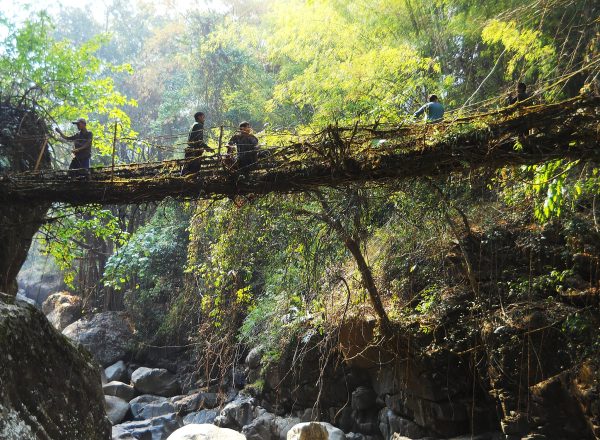
When villagers begin to build a bridge, they know that it will not be they who will cross the structure, but generations to come. Thus, each effort to shape and strengthen the bridge becomes an act of reverence for the community and the ecosystem, where each community member honors their deeply ingrained indigenous values while leaving for posterity a long-lasting symbol of togetherness and tradition.
READ ALSO:



